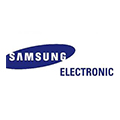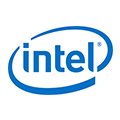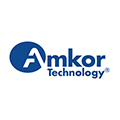
Overview
The semiconductor manufacturing industry is a crucial sector responsible for producing semiconductors, which are the building blocks of modern electronics. These semiconductors are used in a wide range of electronic devices, including computers, smartphones, televisions, and various other consumer electronics, as well as in industrial and automotive applications. The process of semiconductor manufacturing involves several complex steps, including designing, patterning, doping, etching, and packaging. Silicon is the most used material in semiconductor manufacturing due to its abundance and favorable electrical properties, though other materials like gallium arsenide and silicon carbide are also used for specific applications. The industry is highly competitive and constantly evolving, driven by rapid technological advancements and increasing demand for smaller, faster, and more efficient semiconductor devices. Key players in the semiconductor manufacturing industry include Intel, Samsung Electronics, TSMC (Taiwan Semiconductor Manufacturing Company), and Qualcomm, among others. Additionally, advancements such as Moore’s Law, which predicts the doubling of transistor density approximately every two years, continue to shape the industry’s trajectory.
Depending on specific features and functions, GAO Tek’s Hydrogen bromide gas detectors are sometimes referred to as HBr gas sensors, hydrogen bromide monitors, bromine hydride detectors, bromine gas detectors, bromide gas sensors, HBr leak detectors, bromine detection systems, bromine gas alarms, hydrogen bromide sniffers, and bromine safety detectors
Furthermore, GAO Tek’s Hydrogen bromide gas detectors are further grouped into Alarm-enabled, Data logging, Explosion-proof, Handheld, High precision, Outdoor, and Wireless.
GAO Tek’s Hydrogen bromide gas detectors have the following applications in the semiconductor manufacturing industry:
- Safety Monitoring: GAO Tek’s HBr gas detectors are essential for monitoring levels of hydrogen bromide in semiconductor manufacturing facilities. HBr gas is highly toxic, and exposure to elevated concentrations can pose serious health risks to workers. Detectors continuously monitor HBr levels, triggering alarms if concentrations exceed safe limits, thereby alerting personnel to potential hazards and allowing for prompt action to mitigate risks.
- Process Control: Semiconductor manufacturing processes often involve the use of HBr as an etchant or dopant gas. Monitoring HBr levels helps ensure precise control of these processes, optimizing efficiency and product quality. By maintaining tight control over HBr concentrations, manufacturers can prevent process deviations that could lead to defects in semiconductor components.
- Environmental Compliance: Semiconductor manufacturing facilities must adhere to strict environmental regulations regarding the release of hazardous gases, including HBr. Our Gas detectors help monitor emissions to ensure compliance with regulatory standards. Continuous monitoring and data logging enable facilities to track emissions over time, facilitating reporting and demonstrating regulatory compliance.
- Equipment Protection: GAO’s HBr gas detectors also contribute to the protection of manufacturing equipment. Accidental releases of HBr can corrode sensitive equipment and compromise manufacturing processes. Early detection of HBr leaks allows for rapid response measures to contain the release and minimize damage to equipment, thereby reducing downtime and maintenance costs.
More information on hydrogen bromide gas detectors and their applications in other industries can be found on Hydrogen bromide gas detectors. This category page lists related products Environmental.
Systems in the Semiconductor Manufacturing Industry Utilizing Hydrogen Bromide Gas Detectors
Here are some popular systems in the semiconductor manufacturing industry using hydrogen bromide gas detectors:
Gas Detection Hardware:
- HBr gas detectors consist of sensing elements capable of detecting HBr gas concentrations in the air. These sensing elements are often based on various technologies such as electrochemical sensors, infrared spectroscopy, or photoionization detectors. The detectors may be standalone devices or integrated into larger environmental monitoring systems.
Control Systems:
- Control systems are used to manage the operation of HBr gas detectors and coordinate their actions with other safety and control devices in the manufacturing facility. These systems may include programmable logic controllers (PLCs), distributed control systems (DCS), or supervisory control and data acquisition (SCADA) systems. Control systems provide the interface for configuring detector settings, setting alarm thresholds, and initiating response actions in the event of a gas leak.
Data Acquisition Software:
- Data acquisition software is employed to collect and process data from HBr gas detectors in real-time. This software enables continuous monitoring of HBr concentrations, trend analysis, and historical data storage. Data acquisition software may also include features for generating alarms, notifications, and reports based on predefined criteria. Advanced analytics capabilities may be incorporated to identify patterns or anomalies in gas concentration levels.
Integration with Environmental Management Systems:
- HBr gas detectors are often integrated with broader environmental management systems used in semiconductor manufacturing facilities. These systems encompass various monitoring and control functionalities related to environmental parameters such as air quality, temperature, humidity, and ventilation. Integration allows for centralized monitoring and control of multiple environmental factors, ensuring overall safety and regulatory compliance.
Safety Interlock Systems:
- In critical environments, HBr gas detectors may be linked with safety interlock systems to automatically initiate shutdown procedures or activate ventilation systems in response to high HBr concentrations. Safety interlock systems ensure rapid and coordinated responses to gas leaks, minimizing the risk of exposure to hazardous conditions.
GAO Tek’s targeted markets are North America, particularly the U.S. and Canada.
Complying with Government Regulations
GAO Tek’s hydrogen bromide gas detectors comply or help our customers comply with U.S. government regulations such as:
- Occupational Safety and Health Administration (OSHA) regulations
- Environmental Protection Agency (EPA) regulations
- National Fire Protection Association (NFPA) standards
- International Building Code (IBC) and International Fire Code (IFC)
- American National Standards Institute (ANSI) standards
- National Institute for Occupational Safety and Health (NIOSH) guidelines
- State and local regulations regarding workplace safety and environmental protection
GAO Tek’s Hydrogen Bromide Gas Detectors comply or help our clients comply with Canadian regulations such as:
- Occupational Health and Safety Regulations
- Environmental Protection Act
- Canadian Environmental Protection Act
- Workplace Hazardous Materials Information System (WHMIS)
- Canadian Electrical Code (CEC)
- National Fire Code of Canada
- Canadian Standards Association (CSA) standards for gas detection equipment
- Health Canada regulations pertaining to workplace safety and environmental protection.
Case Studies of Hydrogen Bromide Gas Detectors in the Semiconductor Manufacturing Industry
Hydrogen bromide gas detectors are sometimes called HBr gas sensors, hydrogen bromide monitors, bromine hydride detectors, bromine gas detectors, bromide gas sensors, HBr leak detectors, bromine detection systems, bromine gas alarms, hydrogen bromide sniffers, and bromine safety detectors.
Here are some practical examples of using hydrogen bromide gas detectors in the Semiconductor manufacturing industry:
A semiconductor manufacturing facility in Silicon Valley utilizes HBr gas detectors to monitor etching processes where HBr is used as an etchant. The detectors ensure worker safety and prevent environmental contamination by promptly detecting leaks or spills of HBr gas.
A semiconductor fabrication plant in New York employs HBr gas detectors in its cleanroom environment to monitor HBr concentrations during semiconductor wafers production. The detectors are integrated with the facility’s environmental management system to maintain stringent air quality standards.
A semiconductor research facility in Illinois utilizes HBr gas detectors in its laboratory settings to monitor experiments involving the deposition of thin films using HBr gas precursors. The detectors ensure researchers are aware of any potential leaks or releases of HBr gas, allowing for quick response and mitigation measures.
A semiconductor manufacturing plant in Texas employs HBr gas detectors in its chemical storage and handling areas to monitor HBr cylinders and piping systems. The detectors are part of a comprehensive safety program to prevent accidents and ensure compliance with regulatory requirements.
A semiconductor fabrication facility in Oregon utilizes HBr gas detectors in its production line to monitor the use of HBr gas in the doping process. The detectors help maintain precise control over HBr concentrations, ensuring consistent product quality and minimizing waste.
A semiconductor fabrication facility in Canada implements hydrogen bromide gas detectors as part of its safety protocol. During routine operations, a malfunction in a process chamber leads to an unexpected release of hydrogen bromide gas. The detectors quickly detect elevated HBr levels, triggering alarms and initiating emergency shutdown procedures. As a result, personnel are promptly evacuated, and the leak is contained before it poses any health risks or causes damage to equipment. The incident underscores the vital role of HBr gas detectors in ensuring the safety of workers and preventing potential hazards in semiconductor manufacturing environments.
A semiconductor manufacturing plant in Canada faces stringent environmental regulations regarding the emission of hazardous gases, including hydrogen bromide. The facility installs HBr gas detectors throughout the production area to monitor emissions and ensure compliance with regulatory standards. Continuous monitoring and data logging capabilities provided by the detectors enable the facility to track HBr emissions levels accurately over time. By maintaining emissions within permissible limits, the plant demonstrates its commitment to environmental protection and regulatory compliance, avoiding potential fines and penalties.
A semiconductor manufacturing company in Canada relies on precise control of hydrogen bromide gas concentrations in its fabrication processes to achieve optimal product quality and yield. HBr gas detectors are integrated into the process control system to monitor gas levels in real-time. When deviations from the desired concentrations occur, the detectors trigger adjustments to process parameters, ensuring consistency and reliability in semiconductor production. By leveraging HBr gas detectors for process optimization and quality control, the company enhances its competitiveness and reputation for delivering high-performance semiconductor components.
GAO RFID Inc. https://gaorfid.com, sister company of GAO Tek Inc., is ranked as one of the top 10 RFID suppliers in the world. Its RFID, BLE, and IoT products have also been widely used in the semiconductor manufacturing industry. Articles about related industries are given below:
Property and Equipment Management Industry
Use of Hydrogen Bromide Gas Detectors with Leading Software and Cloud Services in the Semiconductor Manufacturing Industry
GAO Tek has used or has facilitated its customers to use GAO’s hydrogen bromide gas detectors with some of the leading software and cloud services in their applications. Examples of such leading software and cloud services include:
- Honeywell Forge for Industrial
- Emerson’s Plantweb Optics
- Siemens SIMATIC WinCC
- Rockwell Automation FactoryTalk
- ABB Ability™ System 800xA
- Yokogawa CENTUM
- OSIsoft PI System
- Schneider Electric EcoStruxure™
- General Electric Digital Plant
- Cisco Kinetic for Manufacturing
- IBM Maximo for Manufacturing
- Microsoft Azure Industrial IoT
- Amazon Web Services (AWS) IoT Core
- Google Cloud IoT Core
- PTC ThingWorx Industrial IoT Platform
- OSIsoft Cloud Services
- Siemens MindSphere
- Honeywell Connected Plant
- Emerson Connected Services
- Rockwell Automation Connected Enterprise
GAO Tek’s hydrogen bromide gas detectors and their applications in other industries are listed on Hydrogen bromide gas detectors. Other related products can be found on this category page Environmental.
Meeting Customers’ Demands
Large Choice of Products
To satisfy the diversified needs of their corporate customers, GAO Tek Inc. and its sister company GAO RFID Inc. together offer a wide choice of testing and measurement devices, network products, RFID, BLE, IoT, and drones.
Fast Delivery
To shorten the delivery to our customers, GAO has maintained a large stock of its products and can ship overnight within the continental U.S. and Canada from the nearest warehouse.
Local to Our Customers
We are located in both the U.S. and Canada. We travel to customers’ premises if necessary. Hence, we provide strong local support to our customers in North America, particularly the U.S. and Canada.
Furthermore, we have built partnerships with integrators, consulting firms, and other service providers in different cities to further strengthen our services. Here are some of the service providers in the semiconductor manufacturing industry we have worked with to serve our joint customers:
- Accenture
- Advanced Micro Devices (AMD)
- Analog Devices
- ANSYS
- Atos
- Booz Allen Hamilton
- Cadence Design Systems
- Capgemini
- CGI Group Inc.
- Cognizant
- Cypress Semiconductor
- Deloitte
- DXC Technology
- Ernst & Young (EY)
- HCL Technologies
- IBM Global Services
- Infosys
- Keysight Technologies
- KPMG
- L&T Infotech
- Lattice Semiconductor
- Marvell Technology Group
- MathWorks
- Maxim Integrated
- Mentor, a Siemens Business
- Microchip Technology
- Micron Technology
- Mindtree
- National Instruments (NI)
- NTT DATA Corporation
- ON Semiconductor
- PricewaterhouseCoopers (PwC)
- Rambus
- Silvaco
- Synopsys
- Tata Consultancy Services (TCS)
- Tech Mahindra
- Texas Instruments
- Wipro Limited
- Xilinx
GAO has Many Customers in the Semiconductor Manufacturing Industry
The products from both GAO Tek Inc. and GAO RFID Inc. have been widely used in the Semiconductor manufacturing industry by many customers, including some leading companies. Here is more information on applications of GAO RFID Inc.’s products in the Semiconductor manufacturing industry. Articles about related industries are given below:
Property and Equipment Management Industry
Here are some of GAO’s customers in the semiconductor manufacturing industry:
- Advanced Micro Devices (AMD)
- Alphora Research Inc.
- Amkor Technology, Inc.
- Analog Devices Canada
- Applied Materials, Inc.
- Broadcom Inc.
- Celestica Inc.
- CMC Microsystems
- Cree, Inc.
- IBM
- Infineon Technologies AG
- Intel Corporation
- Microchip Technology Inc.
- Micron Technology, Inc
- Molex, LLC
- Renesas Electronics Corporation
- Samsung Electronics Co., Ltd.
- Xilinx, Inc.


















Contact Us
Here are GAO Tek’s Hydrogen bromide gas detectors and they are further organized by feature:
Alarm-enabled, Data logging, Explosion-proof, Handheld, High precision, Outdoor, and Wireless.
If you have any questions about our products or want to place an order, our technical experts can help you. Please fill out this form or email us.
